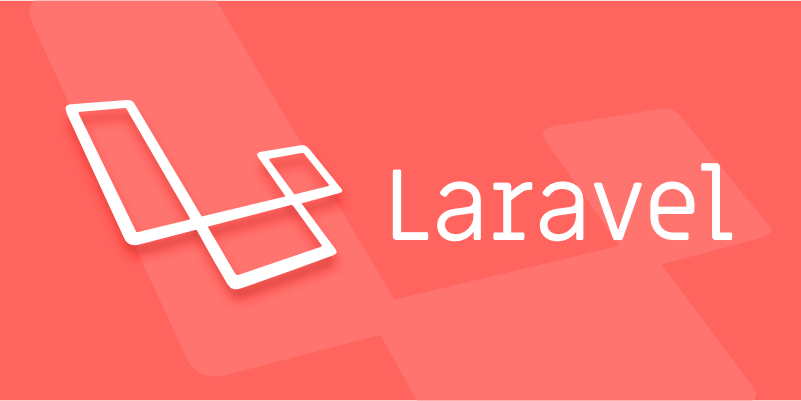Laravel's resource routing automatically generates the corresponding routes for seven CRUD operations through a line of code. When you use Route::resource('photos', PhotoController::class);, Laravel will create seven routes: index, create, store, show, edit, update and destroy, respectively, corresponding to the methods in the controller, and generate URIs based on the resource name. You can also use only or except methods to specify the generated route, such as keeping index and show only, or excluding create and store; you can also change the default parameter name through the parameters method, such as changing {photo} to {my_photo}. In the controller, the method processing logic of naming specifications should be followed. In the view, it is recommended to use the route() function to cooperate with named routes to generate links or forms, thereby improving application flexibility and maintainability.

When you're working with Laravel and dealing with routes, the resource route is one of the most efficient tools for quickly setting up standard CRUD operations. It automatically maps HTTP methods to controller methods, saving you from manually defining each route. The real power comes when you understand how to use it effectively without getting tripped up by its defaults.

What Does a Resource Route Do?
When you define a route like this:
Route::resource('photos', PhotoController::class);
Laravel creates seven routes for handling CRUD operations: index , create , store , show , edit , update , and destroy . These correspond to the usual controller methods, and the URIs are based on the resource name you provide.

For example, the edit method for the PhotoController will be mapped to /photos/{photo}/edit and expect a GET request. Each of these routes also maps to a named route, like photos.edit , which is super useful when generating URLs or redirects in your views or controllers.
Customizing the Resource Routes
Sometimes you don't need all seven routes — maybe your app doesn't have an "edit" form, or you want to exclude delete functionality. Laravel lets you control which routes are generated using the only or except methods:

Route::resource('photos', PhotoController::class)->only([
'index', 'show'
]);
Route::resource('photos', PhotoController::class)->except([
'create', 'store'
]);This helps keep your route list clean and secure by not exposing unnecessary endpoints.
Another thing you might want to customize is the parameter name used in the route. By default, Laravel uses the singular version of the resource name (like {photo} for photos ). If you want to change that:
Route::resource('photos', PhotoController::class)->parameters([
'photo' => 'my_photo'
]); Now your routes will use {my_photo} instead of {photo} in the URLs.
How to Use Resource Routes in Controllers and Views
Once your routes are set up, your controller should follow the expected method names:
-
index()– Show a list of resources -
create()– Show the form to create a new resource -
store(Request $request)– Save the new resource -
show($id)– Display a specific resource -
edit($id)– Show the form to edit a resource -
update(Request $request, $id)– Save the updated resource -
destroy($id)– Delete the resource
In your views, especially when generating links or forms, always use the named routes. For example:
<a href="{{ route('photos.edit', $photo->id) }}">Edit Photo</a>Or for forms:
<form action="{{ route('photos.destroy', $photo->id) }}" method="POST">
@csrf
@method('DELETE')
<button type="submit">Delete</button>
</form>Using named routes ensures your app remains flexible even if the URL structure changes later.
That's basically how the resource route works in Laravel. It's straightforward once you understand what it generates and how to tweak it. The key is knowing when to stick with the defaults and when to customize based on your app's needs.
The above is the detailed content of Using the `resource` route in Laravel.. For more information, please follow other related articles on the PHP Chinese website!

Hot AI Tools

Undress AI Tool
Undress images for free

Undresser.AI Undress
AI-powered app for creating realistic nude photos

AI Clothes Remover
Online AI tool for removing clothes from photos.

Clothoff.io
AI clothes remover

Video Face Swap
Swap faces in any video effortlessly with our completely free AI face swap tool!

Hot Article

Hot Tools

Notepad++7.3.1
Easy-to-use and free code editor

SublimeText3 Chinese version
Chinese version, very easy to use

Zend Studio 13.0.1
Powerful PHP integrated development environment

Dreamweaver CS6
Visual web development tools

SublimeText3 Mac version
God-level code editing software (SublimeText3)

Hot Topics
 VSCode settings.json location
Aug 01, 2025 am 06:12 AM
VSCode settings.json location
Aug 01, 2025 am 06:12 AM
The settings.json file is located in the user-level or workspace-level path and is used to customize VSCode settings. 1. User-level path: Windows is C:\Users\\AppData\Roaming\Code\User\settings.json, macOS is /Users//Library/ApplicationSupport/Code/User/settings.json, Linux is /home//.config/Code/User/settings.json; 2. Workspace-level path: .vscode/settings in the project root directory
 How to handle transactions in Java with JDBC?
Aug 02, 2025 pm 12:29 PM
How to handle transactions in Java with JDBC?
Aug 02, 2025 pm 12:29 PM
To correctly handle JDBC transactions, you must first turn off the automatic commit mode, then perform multiple operations, and finally commit or rollback according to the results; 1. Call conn.setAutoCommit(false) to start the transaction; 2. Execute multiple SQL operations, such as INSERT and UPDATE; 3. Call conn.commit() if all operations are successful, and call conn.rollback() if an exception occurs to ensure data consistency; at the same time, try-with-resources should be used to manage resources, properly handle exceptions and close connections to avoid connection leakage; in addition, it is recommended to use connection pools and set save points to achieve partial rollback, and keep transactions as short as possible to improve performance.
 python itertools combinations example
Jul 31, 2025 am 09:53 AM
python itertools combinations example
Jul 31, 2025 am 09:53 AM
itertools.combinations is used to generate all non-repetitive combinations (order irrelevant) that selects a specified number of elements from the iterable object. Its usage includes: 1. Select 2 element combinations from the list, such as ('A','B'), ('A','C'), etc., to avoid repeated order; 2. Take 3 character combinations of strings, such as "abc" and "abd", which are suitable for subsequence generation; 3. Find the combinations where the sum of two numbers is equal to the target value, such as 1 5=6, simplify the double loop logic; the difference between combinations and arrangement lies in whether the order is important, combinations regard AB and BA as the same, while permutations are regarded as different;
 Mastering Dependency Injection in Java with Spring and Guice
Aug 01, 2025 am 05:53 AM
Mastering Dependency Injection in Java with Spring and Guice
Aug 01, 2025 am 05:53 AM
DependencyInjection(DI)isadesignpatternwhereobjectsreceivedependenciesexternally,promotingloosecouplingandeasiertestingthroughconstructor,setter,orfieldinjection.2.SpringFrameworkusesannotationslike@Component,@Service,and@AutowiredwithJava-basedconfi
 python pytest fixture example
Jul 31, 2025 am 09:35 AM
python pytest fixture example
Jul 31, 2025 am 09:35 AM
fixture is a function used to provide preset environment or data for tests. 1. Use the @pytest.fixture decorator to define fixture; 2. Inject fixture in parameter form in the test function; 3. Execute setup before yield, and then teardown; 4. Control scope through scope parameters, such as function, module, etc.; 5. Place the shared fixture in conftest.py to achieve cross-file sharing, thereby improving the maintainability and reusability of tests.
 Python for Data Engineering ETL
Aug 02, 2025 am 08:48 AM
Python for Data Engineering ETL
Aug 02, 2025 am 08:48 AM
Python is an efficient tool to implement ETL processes. 1. Data extraction: Data can be extracted from databases, APIs, files and other sources through pandas, sqlalchemy, requests and other libraries; 2. Data conversion: Use pandas for cleaning, type conversion, association, aggregation and other operations to ensure data quality and optimize performance; 3. Data loading: Use pandas' to_sql method or cloud platform SDK to write data to the target system, pay attention to writing methods and batch processing; 4. Tool recommendations: Airflow, Dagster, Prefect are used for process scheduling and management, combining log alarms and virtual environments to improve stability and maintainability.
 Laravel error and exception handling
Jul 31, 2025 am 11:57 AM
Laravel error and exception handling
Jul 31, 2025 am 11:57 AM
Laravel's error and exception handling mechanism is based on the PHP exception system and Symfony component, and is managed uniformly by the App\Exceptions\Handler class. 1. Record exceptions through the report() method, such as integrating Sentry and other monitoring services; 2. Convert exceptions into HTTP responses through the render() method, supporting custom JSON or page jumps; 3. You can create custom exception classes such as PaymentFailedException and define their response format; 4. Automatically handle verification exception ValidationException, and manually adjust the error response structure; 5. Decide whether to display details based on the APP_DEBUG configuration.
 Understanding the Java Virtual Machine (JVM) Internals
Aug 01, 2025 am 06:31 AM
Understanding the Java Virtual Machine (JVM) Internals
Aug 01, 2025 am 06:31 AM
TheJVMenablesJava’s"writeonce,runanywhere"capabilitybyexecutingbytecodethroughfourmaincomponents:1.TheClassLoaderSubsystemloads,links,andinitializes.classfilesusingbootstrap,extension,andapplicationclassloaders,ensuringsecureandlazyclassloa






